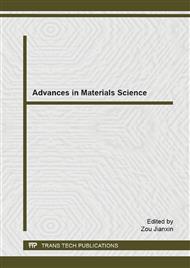p.697
p.701
p.706
p.711
p.716
p.721
p.729
p.733
p.739
Structural Optimization of Laminated Glass Plate Using Discrete Element Method
Abstract:
Laminated glass is widely used to enhance structural functions. The impact fracture behavior of laminated glass is more complicated than that of single glass, because of the combined influences of the large deformation and delamination strengths. In this study, the impact fracture behavior of a laminated glass plate intended for the outside surface of a modern building has been studied by numerical simulations and experiments. This fracture simulation was calculated using a Discrete Element Method (DEM) based on non-continuum mechanics. The laminated glass structures have been optimized for attaining maximum durability against impact fracture based on the response surface method. In the optimum problem, the tensile strength of the interlayer and the adhesive strength between two pieces of glass and the interlayer are taken as the design variables. From the results of the optimization, it has been observed that the laminated glass difficult to break in the case that the tensile strength was high and that the adhesive strength was a little light. The penetration performance of an optimized laminated glass plate was noticeably better in comparison with a commercial laminated glass plate.
Info:
Periodical:
Pages:
716-720
Citation:
Online since:
February 2015
Authors:
Price:
Сopyright:
© 2015 Trans Tech Publications Ltd. All Rights Reserved
Share:
Citation:


